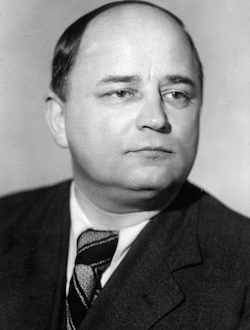
Ernst Theodor Amadeus Hoffmann (ETA Hoffmann) |
ETA Hoffman
Hoffmann Ernst Theodor (Wilhelm) Amadeus (24 I 1776, Koenigsberg – 25 June 1822, Berlin) – German writer, composer, conductor, painter. The son of an official, he received a law degree at the University of Königsberg. He was engaged in literature and painting, he studied music first with his uncle, and then with the organist H. Podbelsky (1790-1792), later in Berlin he took composition lessons from I. F. Reichardt. Was a court assessor in Glogow, Poznan, Plock. Since 1804, the state councilor in Warsaw, where he became the organizer of the Philharmonic Society, the symphony orchestra, acted as a conductor and composer. After the occupation of Warsaw by French troops (1807), Hoffmann returned to Berlin. In 1808-1813 he was a conductor, composer and theater decorator in Bamberg, Leipzig and Dresden. From 1814 he lived in Berlin, where he was an adviser to justice in the highest judicial bodies and legal commissions. Here Hoffmann wrote his most important literary works. His first articles were published on the pages of the Allgemeine Musikalische Zeitung (Leipzig), of which he had been an employee since 1809.
An outstanding representative of the German romantic school, Hoffmann became one of the founders of romantic musical aesthetics and criticism. Already at an early stage in the development of romantic music, he formulated its features and showed the tragic position of a romantic musician in society. Hoffmann imagined music as a special world capable of revealing to a person the meaning of his feelings and passions, as well as comprehending the nature of everything mysterious and inexpressible. In the language of literary romanticism, Hoffmann began to write about the essence of music, about musical works, composers and performers. In the work of K. V. Gluck, W. A. Mozart and especially L. Beethoven, he showed tendencies leading to a romantic direction. A vivid expression of Hoffmann’s musical and aesthetic views are his short stories: “Cavalier Gluck” (“Ritter Gluck”, 1809), “The Musical Sufferings of Johannes Kreisler, Kapellmeister” (“Johannes Kreisler’s, des Kapellmeisters musikalische Leiden”, 1810), “Don Giovanni” (1813), dialogue “The Poet and the Composer” (“Der Dichter und der Komponist”, 1813). Hoffmann’s stories were later combined in the collection Fantasies in the Spirit of Callot (Fantasiesucke in Callot’s Manier, 1814-15).
In the short stories, as well as in Fragments of the Biography of Johannes Kreisler, introduced into the novel The Worldly Views of the Cat Murr (Lebensansichten des Katers Murr, 1822), Hoffmann created the tragic image of an inspired musician, Kreisler’s “mad Kapellmeister”, who rebels against philistinism and doomed to suffer. The works of Hoffmann influenced the aesthetics of K. M. Weber, R. Schumann, R. Wagner. The poetic images of Hoffmann were embodied in the works of many composers – R. Schumann (“Kreislerian”), R. Wagner (“The Flying Dutchman”), P. I. Tchaikovsky (“The Nutcracker”), A. S. Adam (“Giselle”) , L. Delibes (“Coppelia”), F. Busoni (“The Choice of the Bride”), P. Hindemith (“Cardillac”) and others. nicknamed Zinnober”, “Princess Brambilla”, etc. Hoffmann is the hero of the operas by J. Offenbach (“Tales of Hoffmann”, 1881) and G. Lachchetti (“Hoffmann”, 1912).
Hoffmann is the author of musical works, including the first German romantic opera Ondine (1813, post. 1816, Berlin), the opera Aurora (1811-12; possibly post. 1813, Würzburg; posthumous post. 1933, Bamberg ), symphonies, choirs, chamber compositions. In 1970, the publication of a collection of selected musical works by Hoffmann began in Mainz (FRG).
Compositions: works, ed. by G. Ellinger, B.-Lpz.-W.-Stuttg., 1927; poetic works. Edited by G. Seidel. Foreword by Hans Mayer, vols. 1-6, В., 1958; Musical novellas and writings together with letters and diary entries. Selected and annotated by Richard Münnich, Weimar, 1961; в рус. per. — Избранные произведения, т. 1-3, M., 1962.
References: Braudo E. M., E. T. A. Hoffman, P., 1922; Ivanov-Boretsky M., E. T. A. Hoffman (1776-1822), “Music Education”, 1926, No No 3-4; Rerman V. E., German romantic opera, in his book: Opera House. Articles and research, M., 1961, p. 185-211; Zhitomirsky D., The ideal and the real in the aesthetics of E. T. A. Hoffmann. “SM”, 1973, No 8.
CA Marcus





